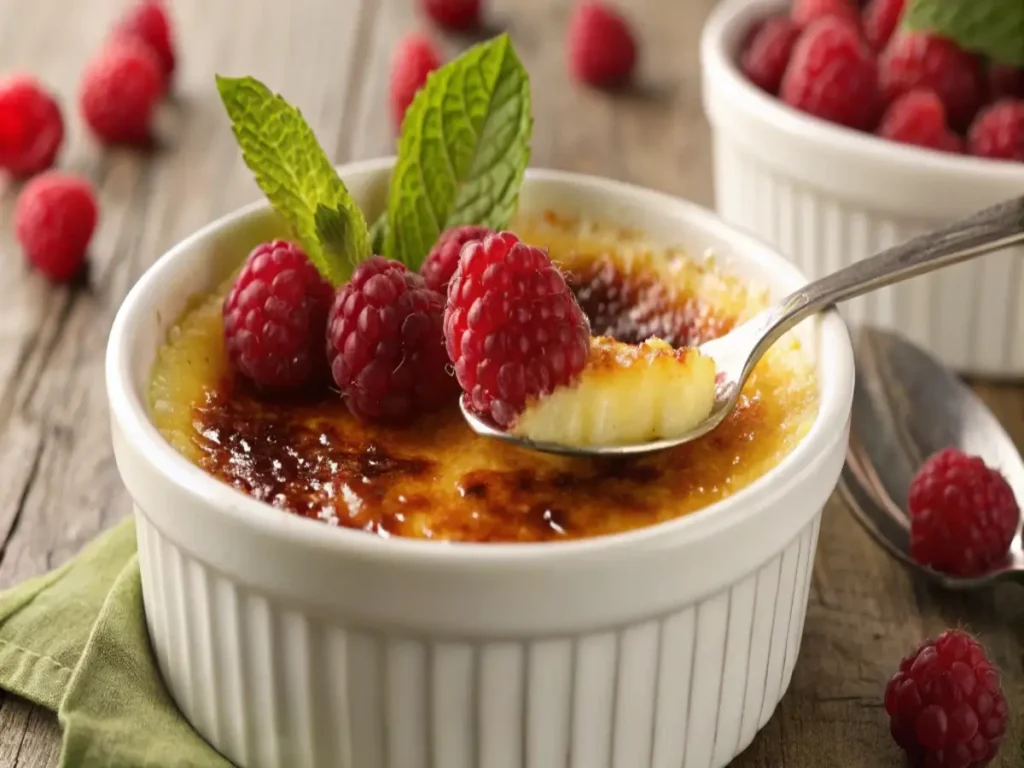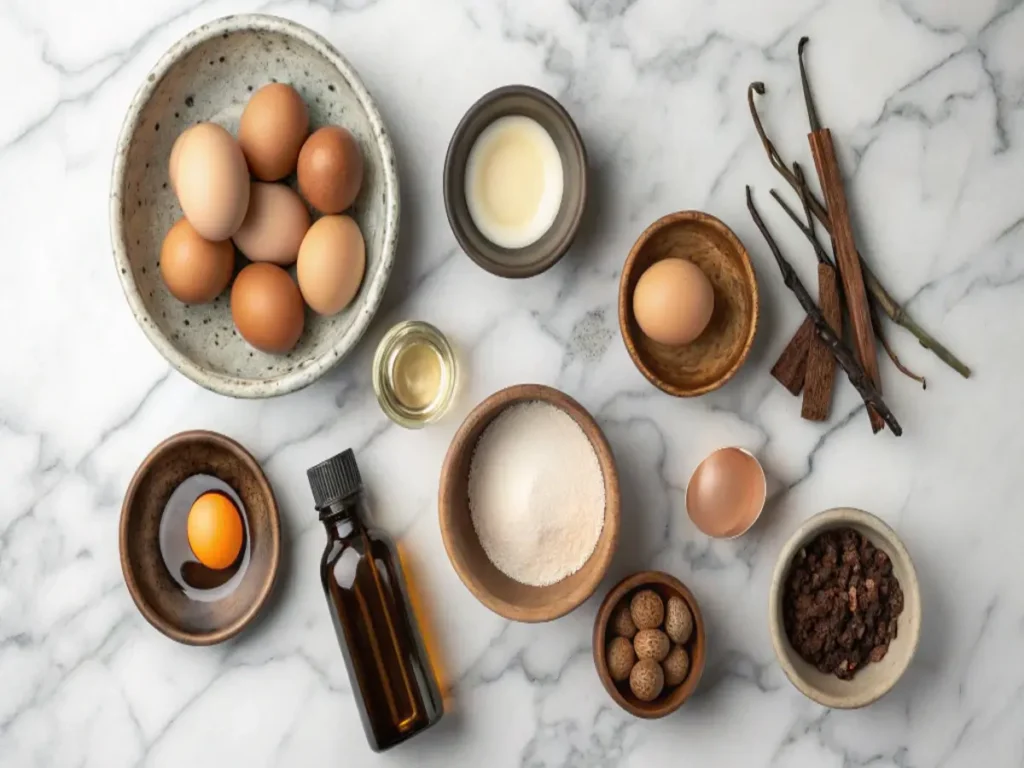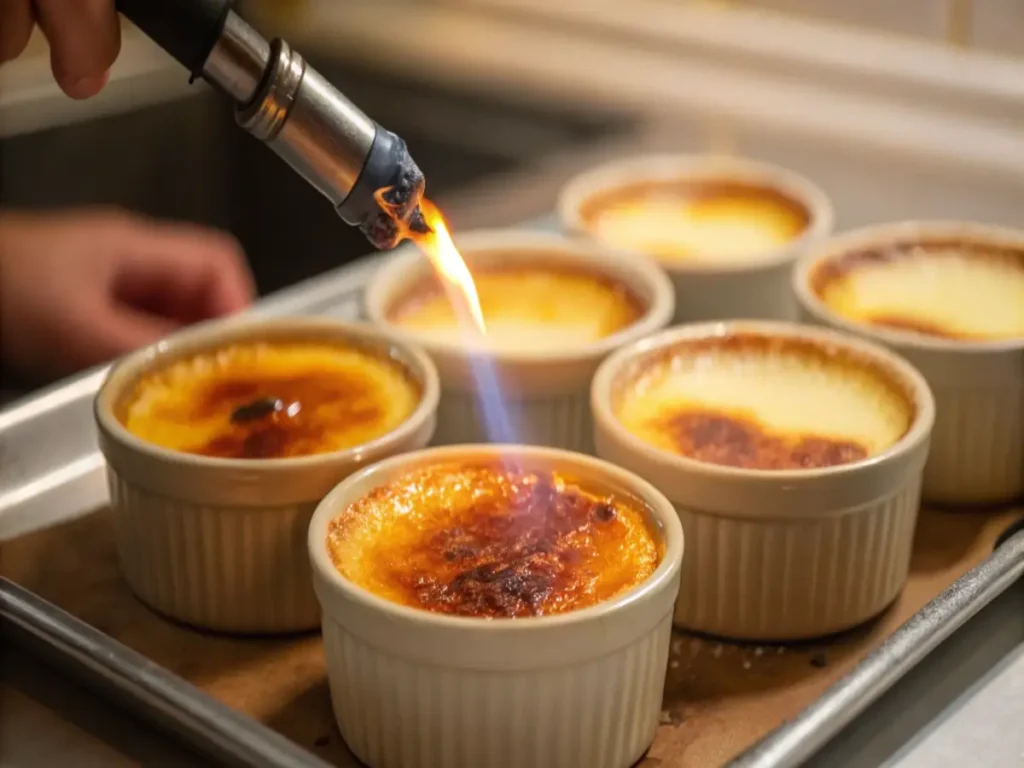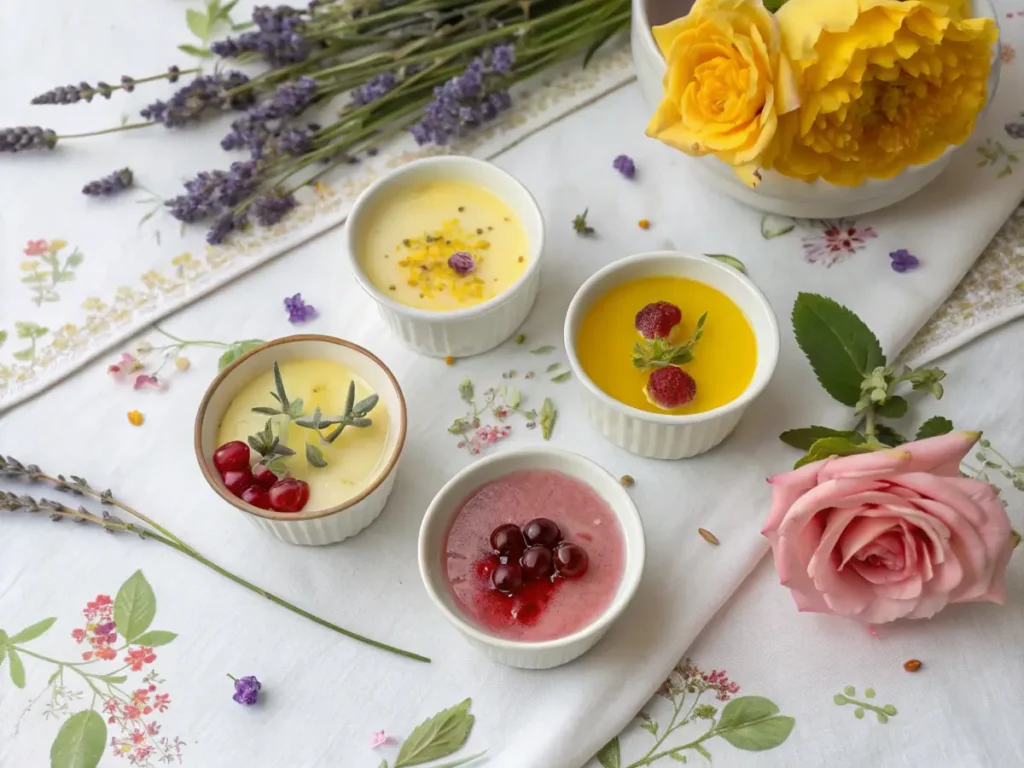The secret to crème brûlée lies in its unique combination of simplicity and indulgence. At first glance, it seems easy to prepare. However, achieving the perfect balance between the creamy custard and the crisp caramelized topping requires care and precision. Moreover, understanding the science and techniques behind this dessert can make all the difference. As a result, mastering crème brûlée becomes both a rewarding and unforgettable experience.
Want to try making this classic dessert yourself? Check out our Perfect Crème Brûlée Recipe: A Creamy, Luxurious Delight for step-by-step instructions and tips to create the ultimate crème brûlée.
Table of Contents
Understanding Crème Brûlée: A Classic Dessert
Origins and History of Crème Brûlée
Crème brûlée, meaning “burnt cream” in French, dates back to the 17th century. However, its exact origins remain debated. While some believe it originated in France, others argue it has roots in England or Spain. Nevertheless, its universal appeal has stood the test of time. Learning its rich history is a delightful first step in uncovering the secret to crème brûlée.
Key Characteristics of a Perfect Crème Brûlée

A perfect crème brûlée is all about balance. The custard must be silky, creamy, and rich. Meanwhile, the sugar topping should be thin and crisp. When you crack the surface with a spoon, it should shatter like glass, revealing the soft custard underneath. Therefore, paying attention to texture and consistency is essential.
The Science Behind Crème Brûlée’s Magic
Why Custard Texture is Crucial
The custard is the heart of crème brûlée. If it’s overcooked, it becomes rubbery; on the other hand, undercooking leaves it soupy. In addition, it must be whisked gently to avoid air bubbles, which can disrupt the smooth texture. Therefore, baking the custard slowly in a water bath is key to success. This method ensures the custard sets evenly without curdling.
The Role of Caramelized Sugar
The caramelized sugar topping is equally important. Moreover, it provides a satisfying crunch that contrasts with the creamy custard. However, getting the sugar just right takes practice. A culinary blowtorch helps evenly melt the sugar without burning it. As a result, you get the perfect thin crust that makes crème brûlée so special.
Essential Ingredients for Crème Brûlée

Quality Cream and Milk
Using high-quality cream is essential. For instance, heavy cream creates the rich texture that defines crème brûlée. Some recipes mix cream with milk, but cream alone gives the best results. Therefore, investing in fresh, high-quality cream is a must for mastering the secret to crème brûlée.
Fresh Eggs for a Silky Custard
Egg yolks are what make the custard smooth and velvety. In addition, fresh, high-quality eggs ensure the custard sets properly. However, over-whisking can introduce too much air, which may create an undesirable texture. As a result, it’s important to whisk gently.
Vanilla: The Soul of Crème Brûlée
Vanilla is what gives crème brûlée its signature flavor. Moreover, the choice of vanilla—whether a bean, extract, or paste—can significantly affect the taste. For example, using a vanilla pod not only adds an authentic aroma but also leaves beautiful black specks in the custard. Therefore, always opt for the best vanilla you can find.
Sugar Selection for the Topping
Fine white sugar works best for the topping. In addition, it caramelizes evenly under the blowtorch, creating a smooth and glassy crust. However, avoid raw or coarse sugars, as they may not melt properly. Consequently, the texture of your topping could be compromised.
Mastering the Technique
Balancing Heat During Baking
Baking crème brûlée requires precise control of heat. A water bath, or bain-marie, is used to distribute heat evenly and prevent the custard from curdling. Moreover, the water bath keeps the custard smooth and creamy. However, always monitor the oven temperature carefully, as overheating can ruin the texture. As a result, you’ll achieve a custard that’s perfectly set with a slight jiggle in the center.
How to Perfectly Torch the Sugar

Torching the sugar is a crucial step in the secret to crème brûlée. For instance, using a culinary blowtorch gives you more control than a broiler. Move the flame steadily across the surface to avoid burning any spots. Meanwhile, watch closely to ensure the sugar melts evenly into a golden-brown crust. As a result, you’ll create the perfect crunchy topping.
Avoiding Common Mistakes
Mistakes can happen even when following a recipe. For example, over-baking the custard can make it rubbery. On the other hand, under-torching the sugar leaves it grainy. Therefore, practice patience and focus on each step to avoid these pitfalls.
Variations and Flavor Twist

Infused Flavors: From Citrus to Lavender
One way to elevate crème brûlée is by adding infused flavors. For instance, you can include citrus zest, lavender, or even espresso in the custard. Moreover, these flavors provide exciting twists that keep the dessert interesting. As a result, you can customize crème brûlée to suit your taste.
Creative Presentations and Serving Ideas
Crème brûlée is traditionally served in ramekins. However, you can experiment with different presentations. For example, serving it in mini mason jars or layering it with fruit compote adds a unique touch. In addition, garnishing with berries or edible flowers enhances both the flavor and appearance.
Troubleshooting Crème Brûlée Issues
Why Your Custard Might Not Set
If your custard is runny, it might need more baking time. Furthermore, skipping the water bath could cause uneven cooking. Therefore, always double-check your oven settings and ensure the ramekins are submerged halfway in water. As a result, your custard will set perfectly.
Dealing with Over-Browned or Under-Torched Topping
The topping’s appearance is part of the secret to crème brûlée, but it can be tricky. For instance, if the sugar burns too quickly, the torch might be too close. On the other hand, under-torching leaves sugar granules instead of a smooth crust. Consequently, learning to control the flame is essential for the perfect topping.
Tips for Serving the Perfect Crème Brûlée
Pairing Crème Brûlée with Desserts and Drinks
Crème brûlée pairs beautifully with fresh berries, biscotti, or even whipped cream. In addition, it goes well with dessert wines like Sauternes or a strong espresso. Moreover, these pairings balance the sweetness of the custard and enhance the overall experience.
Presentation Tips for a Stunning Final Dish
Presentation is just as important as taste. For example, serving crème brûlée in elegant ramekins and garnishing with mint leaves or edible flowers can elevate its appearance. Therefore, take a few extra minutes to make your dessert look as amazing as it tastes.
Conclusion
The secret to crème brûlée is in the details. Moreover, using high-quality ingredients and mastering the technique ensures success. However, practice and patience are key to creating a dessert that’s both creamy and crunchy. As a result, you’ll have a dish that’s sure to impress your guests. Are you ready to uncover the magic of crème brûlée?
FAQs
What’s the Best Sugar for the Secret to Crème Brûlée?
The best sugar for the secret to crème brûlée is fine white granulated sugar because it caramelizes evenly, creating a smooth and crisp topping. Avoid coarse or raw sugars, as they can result in uneven melting and burnt spots.
Can You Achieve the Secret to Crème Brûlée Without a Torch?
Yes! While a culinary torch is the best tool, you can achieve the secret to crème brûlée using your oven’s broiler function. Simply place the ramekins under the broiler for a few minutes, watching carefully to prevent burning.
What’s the Secret to Crème Brûlée’s Perfect Custard Texture?
The secret to crème brûlée’s custard texture lies in slow baking with a water bath. This technique ensures even heat distribution, preventing curdling or overcooking. The custard should be firm but slightly jiggly in the center.
How Far in Advance Can You Prepare Crème Brûlée?
You can prepare crème brûlée up to 2 days in advance. Store it in the refrigerator without the sugar topping. Just before serving, sprinkle sugar on top and caramelize it for the perfect crispy finish.
Why Is My Crème Brûlée Runny After Baking?
A runny crème brûlée usually means it’s undercooked or the oven temperature was too low. The secret to crème brûlée setting perfectly is baking at 300°F (150°C) in a water bath until the edges are firm, but the center has a slight wobble.
Can You Make Crème Brûlée Without Heavy Cream?
Yes! While heavy cream is the traditional choice, you can make crème brûlée with a mix of whole milk and half-and-half. However, the secret to crème brûlée’s richness is its high-fat content, so alternatives may result in a lighter texture.
Is Crème Brûlée Gluten-Free?
Yes, crème brûlée is naturally gluten-free, as it consists of cream, egg yolks, sugar, and vanilla. To ensure it remains gluten-free, avoid adding thickening agents like flour or cornstarch.
